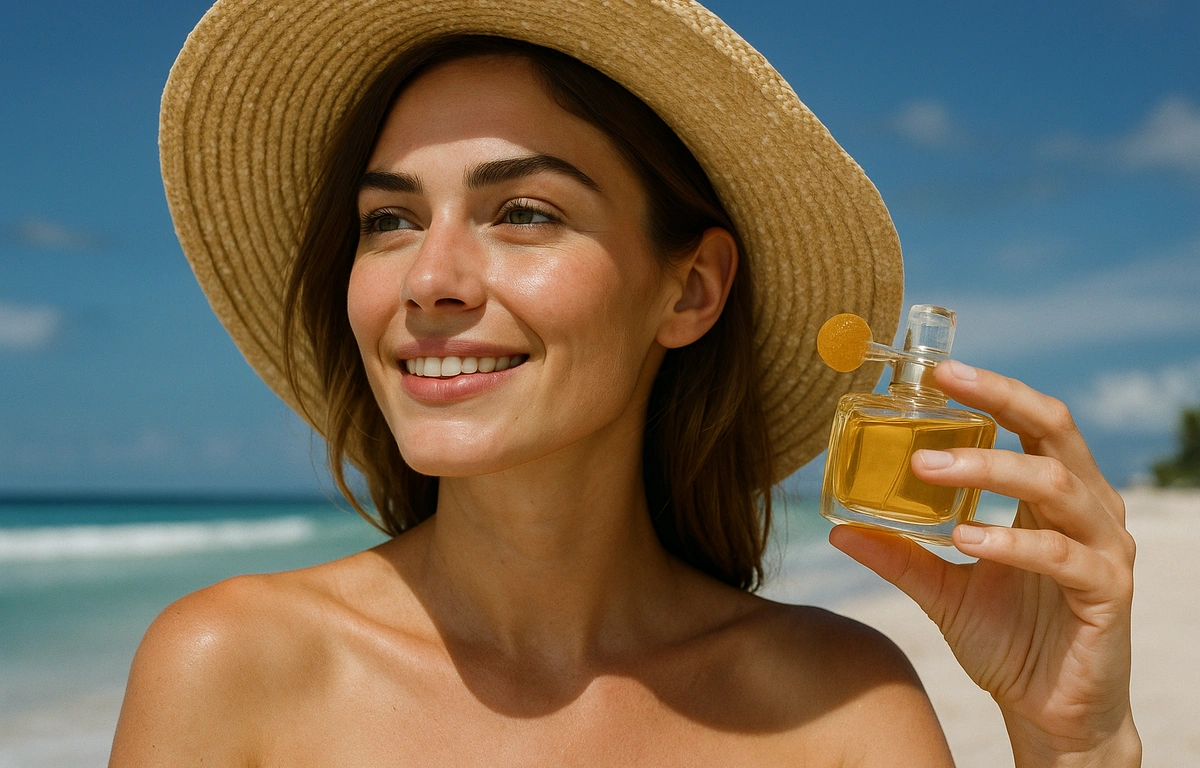Just a few years ago, it seemed that applying a cream with SPF was the universal answer to all questions about sun protection. But modern dermatology and cosmetology show that sunlight is only part of the problem. The skin is also affected by blue light (HEV), infrared radiation (IR), and urban pollution, which together accelerate aging, promote pigmentation, and reduce the skin’s ability to regenerate.
That’s why experts today talk about the concept of “360° sun protection” — a comprehensive approach that goes far beyond the classic SPF.
Why Regular SPF Is No Longer Enough
SPF (Sun Protection Factor) reflects only the level of protection against type B ultraviolet rays (UVB) — the rays that cause sunburn. Most modern products also provide UVA protection (responsible for photoaging), but this alone is not enough.
1. HEV (blue light)
- Sources: screens, LED lighting, sunlight
- Effects: oxidative stress, disruption of the skin barrier, stimulation of melanogenesis (pigmentation)
2. Infrared radiation (IR-A)
- Sources: sun’s thermal radiation
- Effects: destruction of collagen and elastin fibers, accelerated skin aging
3. Urban pollution (PM 2.5, exhaust gases, heavy metals)
- Effects: inflammation, depletion of the skin’s antioxidant system, dull complexion
Together, these factors create the need for multi-component protection — not only from sunlight, but from the entire spectrum of external stressors.
The Concept of 360° Sun Protection
It’s not just about SPF cream. It’s a system that includes:
- Physical barrier: UVA/UVB filters, mineral components
- Antioxidants: vitamins C and E, polyphenols, plant extracts that neutralize free radicals
- Anti-pollution complexes: reduce the effects of smog, dust, and metals
- Ease of use: encourages proper application and reapplication throughout the day
Formats of Modern Sunscreen Products
Modern cosmeceuticals offer a wide range of formats that differ not only in texture but also in how they are used.
1. Creams
- The most classic and multifunctional format
- Suitable for dry and mature skin when extra nourishment is needed
- Denser texture; often used as both day care and protection
2. Fluids and gels
- Lightweight and fast-absorbing
- Ideal for combination and oily skin, and as a base for makeup
- Example: Bronzecran Face Sunscreen Fluid SPF 50
3. Sticks
- Compact, convenient for refreshing protection throughout the day
- Used on specific areas: lips, eyelids, nose, ears, scars, tattoos
- Work well over makeup. Example: Bronzecran Sun Stick Sensitive Areas SPF 50
4. Sprays and mists
- Convenient for the body and reapplication outdoors
- Transparent options available that don’t leave a sticky residue
- Important to ensure even application
5. Powders and cushions with SPF
- Provide additional, but not primary, protection
- Allow makeup refresh and slight reinforcement of UV defense
- Suitable for urban use, not beach activity
6. Tinted products or foundations with SPF
- Combine decorative effect and protection
- Should be applied in generous amounts to ensure the claimed SPF level
Key takeaway: don’t rely on a single product — combine different formats depending on your daily routine.
Physical and Chemical Filters: Which to Choose?
Physical (mineral) filters
- Main ingredients: zinc oxide, titanium dioxide
- Mechanism: reflect and scatter sunlight, creating a “mirror shield”
- Advantages:
- Safe even for children and sensitive skin
- Work immediately after application
- Rarely cause irritation
- Disadvantages:
- May leave a white cast (modern nanoformulas minimize this)
- Best for: sensitive or reactive skin, and for those seeking natural protection
Chemical (organic) filters
- Examples: avobenzone, octocrylene, homosalate, Tinosorb
- Mechanism: absorb UV rays and convert them into heat energy
- Advantages:
- Lightweight and comfortable, no white residue
- Allow creation of high-SPF, long-lasting formulas
- Disadvantages:
- May irritate very sensitive skin
- Require application 15–20 minutes before sun exposure
- Best for: most adults, especially in fluids and gels for daily use
Combined formulas
- Broad-spectrum UVA + UVB protection
- Better photostability
- More pleasant textures
How to Choose Your Protection Format: The Academie Scientifique de Beauté Example
1. For city life and everyday use
Academie Bronzecran Face Sunscreen Fluid SPF 50 — lightweight, fast-absorbing fluid with no white marks. Perfect as a makeup base for daily city life, office days, and all-season use.
2. For local and convenient protection
Academie Bronzecran Sun Stick Sensitive Areas SPF 50 — for delicate areas (lips, eyes, ears, moles). Compact and ideal for on-the-go reapplication, even over makeup.
3. For pigmentation prevention
Academie 365 White UV Screen SPF 50 — protection + tone correction. Helps prevent new pigmentation and evens the complexion. Recommended for melasma, post-acne, and photoaging.
4. For urban life and pollution defense
Academie Derm Acte Anti-Pollution — a protective anti-smog cream creating a “breathable shield” against dust and exhaust particles. Ideal for those living in large cities.
Cosmetologist’s Tips: How to Apply 360° Sun Protection
- Apply about ½ teaspoon of product to face and neck.
- Reapply every 2–3 hours during sun exposure.
- Combine formats: morning — fluid; daytime — stick for touch-ups.
- Use a vitamin C serum under SPF for enhanced antioxidant protection.
- In the evening, cleanse and replenish your skin with antioxidants and hydration.
Conclusion
360° sun protection is not a trend but a necessity for modern skin. In a world of constant sun, screens, smog, and stress, SPF alone is no longer enough.
Académie Scientifique de Beauté offers professional solutions for every need — from lightweight daily fluids to anti-pollution creams. The right skincare strategy not only protects your skin but also keeps it youthful and radiant for years to come.
Learn more about professional cosmeceuticals for sun protection on the official Academie website.

